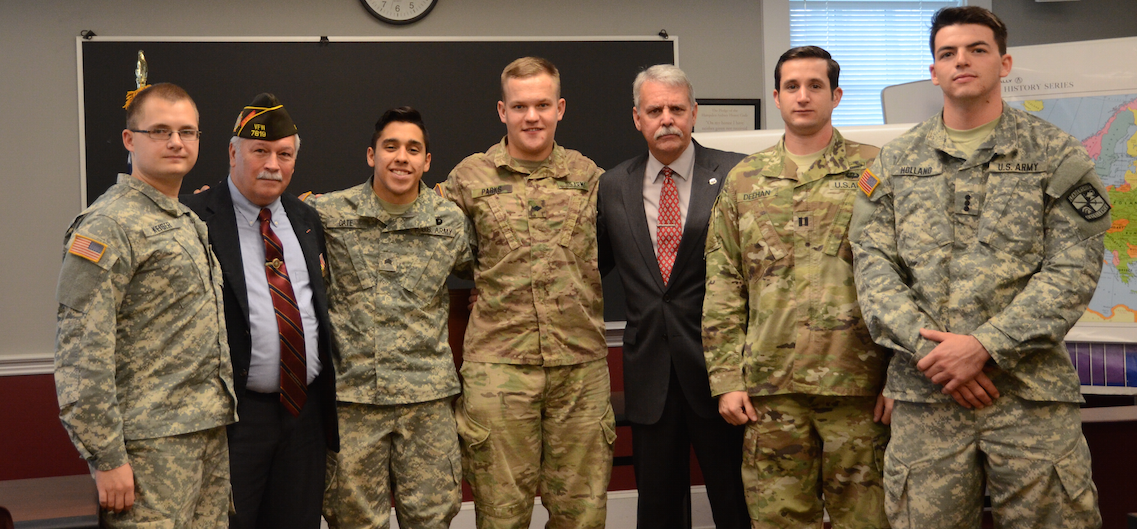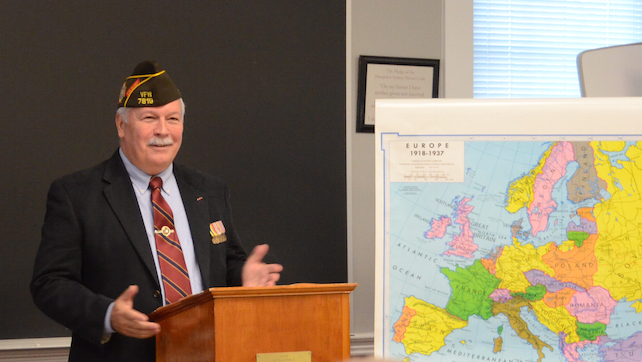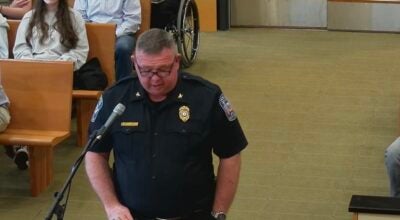Great War leadership
Published 12:35 pm Tuesday, November 14, 2017
Hampden-Sydney College (H-SC) recognized Veteran’s Day via a ceremony Thursday that highlighted World War I (WWI) and the impact that some of the college’s past students had on that conflict, which is known as the “Great War.”
The ceremony was originally slated to take place outside at H-SC’s Memorial Gate, but inclement weather forced it to an indoor setting at the Wilson Center for Leadership in the Public Interest.
The center’s director, Lt. Col. Rucker Snead, estimated that 45 people attended the event, which featured Col. Greg Eanes as its keynote speaker, delivering a speech entitled “Great War Leadership by Hampden-Sydney Men.”
“This year’s ceremony was particularly memorable for two reasons,” Snead said. “First, we are offering a special topics course on WWI this fall since it is the 100th anniversary of the United States entering that war. Thus, we tailored the ceremony to focus on the involvement of Hampden-Sydney men in the war.”
He noted that a number of H-SC students taking that special topics course were present for the ceremony.
The second reason he noted for the ceremony being especially memorable came thanks for the efforts of Lt. Braxton Marcela, a 2014 Hampden-Sydney graduate and a law school graduate who Snead said received a direct commission to serve as a JAG officer in the U.S. Army Reserve.
“As part of our ceremony, I was honored to give him his oath of office which officially brought him into the U.S. Army,” said Snead, who is an Army veteran. “It is fitting that our newest alumni joined his brothers as part of ‘our long garnet and grey line’ in service to our nation during a Veterans Day ceremony on the same day that we celebrated the founding of our college in 1775.”
In his speech, Eanes, a U.S. Air Force veteran, gave impressive details regarding the notable extent to which H-SC students had an impact on WWI.
“We know about 497 Hampden-Sydney men were involved in the Great War to some
degree,” Eanes’ speech reads. “When one does a statistical analysis, one can see that Hampden-Sydney men were practically everywhere doing something in support of the war effort. Hampden-Sydney men demonstrated individual leadership, often by example, if not by position and circumstance.”
In his summary overview, Eanes noted that at least 110 H-SC men were enrolled in the Student Army Training Corps while at the college.
“Of the remaining 369 at least 167 or 45 percent served in a designated war zone while the
remainder were in the United States or nearby territories providing training, engaged in training or working in the various medical, logistical and administrative jobs needed to support an army at war,” his speech reads. “Of those serving in the combat zone, at least four were killed in action and 15 were wounded to some degree.”
Eanes cited that a majority of the Hampden-Sydney men — 276 — served in the Army, and 139 of them were officers.
“Our Hampden-Sydney men represented all the military services and many civilian organizations and held a variety of ranks and jobs in the Great War for democracy,” his speech concludes. “The war, however, covered a very brief period of their lives, and those that survived brought their sense of duty, patriotism and leadership home where they turned their swords into ploughshares and became leaders in their communities. Their lifetime of service is a legacy for us all.”






